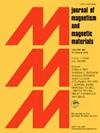振动能量采集磁流变阻尼器的设计与性能分析
IF 2.5
3区 材料科学
Q3 MATERIALS SCIENCE, MULTIDISCIPLINARY
引用次数: 0
摘要
磁流变(MR)减振器在汽车半主动悬架系统中具有广阔的应用前景,但在汽车半主动悬架系统中直接应用磁流变减振器不可避免地需要从车载电池中获取大量电能,并会出现断电问题。同时,由于 MR 减振器的气缸和减振器活塞之间的摩擦,机械能会转化为热能。为了避免过多的能量浪费,并在一定程度上实现 MR 阻尼器的自供电,本文开发了一种新型振动能量采集 MR 阻尼器(VEHMRD)。首先,建立了能量采集、阻尼力和自供电数学模型。然后,设计了所提 VEHMRD 的结构参数,并应用多目标水循环算法找出了所提磁共振阻尼器的最优参数。使用 Comsol 软件模拟了发电和阻尼性能。最后,制作了原型,并测试了 VEHMRD 的发电量、阻尼力和自发电能力。实验结果也与模拟结果进行了比较。结果显示,实验感应电压低于模拟电压,误差约为 15%。实验阻尼力与模拟阻尼力之间的差异很小,误差在 6% 以内,在施加 1.75A 电流时,最大阻尼力约为 1800 N。所开发的 VEHMRD 具有更高的振动能量收集能力。当由外部电源供电时,所提出的磁共振阻尼器具有良好的阻尼性能。此外,即使在自供电的情况下,它也能提供一定的阻尼力。本文章由计算机程序翻译,如有差异,请以英文原文为准。
Design and performance analysis of a vibration energy harvesting magnetorheological damper
Magnetorheological (MR) dampers have a promising application in vehicle semi-active suspension system, but the direct application of MR dampers in vehicle semi-active suspension system inevitably requires a large amount of electrical energy from the on-board battery and there will be a power failure problem. At the same time, mechanical energy is converted into heat due to the friction between the cylinder and the damper piston of the MR damper. In order to avoid excessive energy waste and realize the self-powered supply of the MR damper to a certain extent, a new vibration energy harvesting MR damper (VEHMRD) is developed in this paper. First, energy harvesting, damping force and self-powered mathematical models are established. Then, the structural parameters of the proposed VEHMRD are designed, and the multi-objective water-cycle algorithm is applied to find out the optimal parameters of the proposed MR damper. Power generation and damping performance are simulated using Comsol software. Finally, a prototype is fabricated, and the power generation, damping force, and self-power ability of the VEHMRD are also tested. The experimental results are also compared with the simulated ones. The results show that the experimental induction voltage is lower than the simulated one with an error of about 15 %. The difference between the experimental damping force and the simulated damping force is small, with an error within 6 %, and the maximum damping force is about 1800 N at an applied current of 1.75A. When the collected electric energy is rectified and supplied to the MR damper, the damping force can reach over 400 N. The developed VEHMRD has a higher vibration energy harvesting capability. When powered by an external power source, the damping performance of the proposed MR damper is good. In addition, it can provide a certain damping force even when self-powered.
求助全文
通过发布文献求助,成功后即可免费获取论文全文。
去求助
来源期刊

Journal of Magnetism and Magnetic Materials
物理-材料科学:综合
CiteScore
5.30
自引率
11.10%
发文量
1149
审稿时长
59 days
期刊介绍:
The Journal of Magnetism and Magnetic Materials provides an important forum for the disclosure and discussion of original contributions covering the whole spectrum of topics, from basic magnetism to the technology and applications of magnetic materials. The journal encourages greater interaction between the basic and applied sub-disciplines of magnetism with comprehensive review articles, in addition to full-length contributions. In addition, other categories of contributions are welcome, including Critical Focused issues, Current Perspectives and Outreach to the General Public.
Main Categories:
Full-length articles:
Technically original research documents that report results of value to the communities that comprise the journal audience. The link between chemical, structural and microstructural properties on the one hand and magnetic properties on the other hand are encouraged.
In addition to general topics covering all areas of magnetism and magnetic materials, the full-length articles also include three sub-sections, focusing on Nanomagnetism, Spintronics and Applications.
The sub-section on Nanomagnetism contains articles on magnetic nanoparticles, nanowires, thin films, 2D materials and other nanoscale magnetic materials and their applications.
The sub-section on Spintronics contains articles on magnetoresistance, magnetoimpedance, magneto-optical phenomena, Micro-Electro-Mechanical Systems (MEMS), and other topics related to spin current control and magneto-transport phenomena. The sub-section on Applications display papers that focus on applications of magnetic materials. The applications need to show a connection to magnetism.
Review articles:
Review articles organize, clarify, and summarize existing major works in the areas covered by the Journal and provide comprehensive citations to the full spectrum of relevant literature.
 求助内容:
求助内容: 应助结果提醒方式:
应助结果提醒方式:


